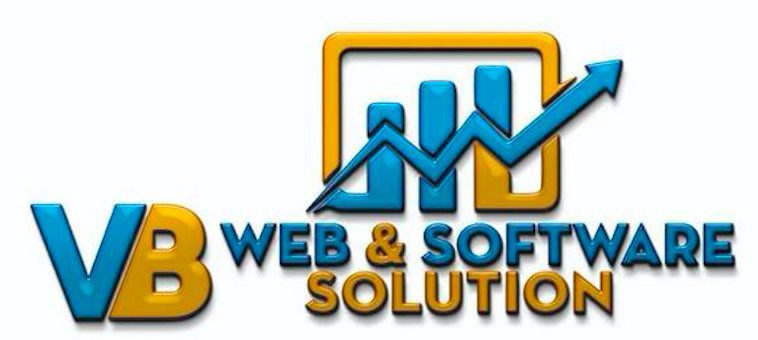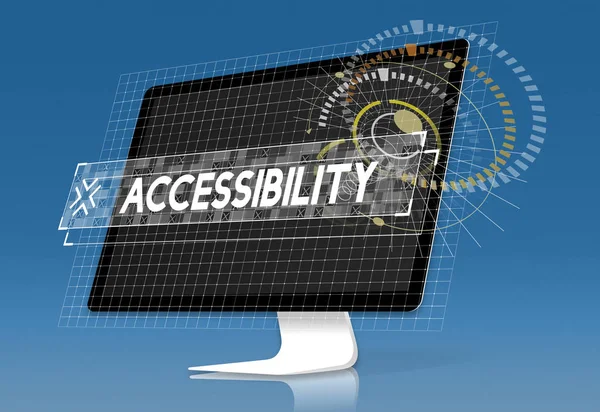In today’s digital age, Website for Accessibility is no longer optional—it’s a necessity. An accessible website ensures that everyone, including people with disabilities, can navigate, understand, and interact with your content. Beyond being a moral obligation, accessibility is also a legal requirement in many countries, and it can significantly improve your website’s usability, SEO, and overall user experience.
As we move further into 2025, the importance of web accessibility continues to grow. In this article, we’ll explore what web accessibility is, why it matters, and actionable steps to optimize your website for accessibility.
What is Web Accessibility?
Web accessibility refers to the practice of designing and developing websites that are usable by everyone, including people with disabilities such as visual, auditory, cognitive, or motor impairments. This involves creating content and interfaces that can be perceived, understood, navigated, and interacted with by all users, regardless of their abilities or the devices they use.
The Web Content Accessibility Guidelines (WCAG), developed by the World Wide Web Consortium (W3C), provide a comprehensive framework for making web content accessible. These guidelines are organized around four principles: Perceivable, Operable, Understandable, and Robust (POUR).
Why is Web Accessibility Important in [2025]?
1. Legal Compliance
Many countries have laws requiring websites to be accessible. For example, the Americans with Disabilities Act (ADA) in the U.S. and the European Accessibility Act (EAA) in the EU mandate accessibility standards for websites. Non-compliance can result in legal penalties and lawsuits.
2. Improved User Experience
An accessible website provides a better user experience for everyone, not just people with disabilities. Features like clear navigation, readable text, and keyboard-friendly interfaces benefit all users.
3. Enhanced SEO
Many accessibility practices, such as using alt text for images and proper heading structures, also improve your website’s SEO. Search engines favor websites that are easy to navigate and understand.
4. Broader Audience Reach
Over 1 billion people worldwide live with some form of disability. By making your website accessible, you can reach a larger audience and tap into new markets.
5. Positive Brand Image
Prioritizing accessibility demonstrates your commitment to inclusivity and social responsibility, enhancing your brand’s reputation.
How to Optimize Your Website for Accessibility
1. Use Semantic HTML
Semantic HTML involves using HTML elements for their intended purpose, which helps screen readers and other assistive technologies understand your content. For example:
- Use
<h1>to<h6>tags for headings. - Use
<nav>for navigation menus. - Use
<button>for buttons and<a>for links.
Example:
<h1>Main Heading</h1> <p>This is a paragraph of text.</p> <button>Click Me</button>
2. Provide Alt Text for Images
Alt text (alternative text) describes the content of images for users who cannot see them. It’s also used by search engines to understand images.
Best Practices:
- Be descriptive but concise.
- Avoid using phrases like “image of” or “picture of.”
- Decorative images should have empty alt text (
alt="").
Example:
<img src="dog.jpg" alt="A golden retriever playing in the park">3. Ensure Keyboard Accessibility
Many users rely on keyboards, rather than a mouse, to navigate websites. Ensure all interactive elements (e.g., links, buttons, forms) are accessible via keyboard.
Tips:
- Use the
tabindexattribute to manage focus order. - Ensure all functionality is available through keyboard shortcuts.
- Avoid using keyboard traps (e.g., elements that cannot be exited using the keyboard).
4. Use ARIA Landmarks
Accessible Rich Internet Applications (ARIA) landmarks provide additional context for assistive technologies. Use ARIA roles and attributes to enhance accessibility.
Example:
<nav role="navigation"> <ul> <li><a href="/">Home</a></li> <li><a href="/about">About</a></li> </ul> </nav>
5. Ensure Color Contrast
Poor color contrast can make text difficult to read for users with visual impairments. The WCAG recommends a contrast ratio of at least 4.5:1 for normal text and 3:1 for large text.
Tools:
- Use tools like WebAIM’s Contrast Checker to test color contrast.
- Avoid using color alone to convey information (e.g., red for errors).
6. Make Forms Accessible
Forms are a common barrier for users with disabilities. Ensure your forms are accessible by:
- Using
<label>elements for form fields. - Providing clear error messages and instructions.
- Grouping related fields with
<fieldset>and<legend>.
Example:
<label for="name">Name:</label> <input type="text" id="name" name="name">
7. Provide Captions and Transcripts
For multimedia content like videos and podcasts, provide captions and transcripts to make them accessible to users with hearing impairments.
Tools:
- Use tools like YouTube’s automatic captioning or Rev for accurate captions.
- Include transcripts for audio-only content.
8. Test with Assistive Technologies
Regularly test your website using assistive technologies like screen readers (e.g., NVDA, JAWS) and keyboard-only navigation. This helps identify and fix accessibility issues.
9. Follow WCAG Guidelines
The WCAG 2.1 guidelines are the gold standard for web accessibility. Aim to meet at least Level AA compliance, which includes:
- Perceivable: Content is presented in ways that users can perceive.
- Operable: Users can navigate and interact with the interface.
- Understandable: Content and navigation are clear and predictable.
- Robust: Content is compatible with current and future technologies.
10. Educate Your Team
Accessibility is a team effort. Educate your designers, developers, and content creators about accessibility best practices to ensure a consistent approach.

Tools for Testing and Improving Accessibility
1. WAVE (Web Accessibility Evaluation Tool)
- A free tool that analyzes your website for accessibility issues.
- Website: WAVE
2. Axe by Deque
- A browser extension for testing accessibility during development.
- Website: Axe
3. Lighthouse (Google Chrome)
- A built-in tool in Chrome DevTools for auditing accessibility, performance, and SEO.
- How to Use: Open Chrome DevTools > Lighthouse > Generate Report.
Real-World Examples of Accessible Websites
1. BBC
The BBC’s website is a model of accessibility, with features like keyboard navigation, high contrast modes, and screen reader compatibility.
2. Apple
Apple’s website adheres to WCAG guidelines, offering accessible forms, alt text for images, and keyboard-friendly navigation.
3. GOV.UK
The UK government’s website is designed with accessibility in mind, featuring clear language, simple navigation, and responsive design.
Conclusion
Optimizing your website for accessibility is not just a legal requirement—it’s a moral obligation and a smart business decision. By following the steps outlined in this guide, you can create a website that is inclusive, user-friendly, and compliant with accessibility standards.
Remember, accessibility is an ongoing process. Regularly test your website, gather feedback from users, and stay updated with the latest guidelines and technologies. With the right approach, you can ensure your website is accessible to everyone, regardless of their abilities.
Read More: The Benefits of Using Progressive Web Apps (PWAs) for Your Business
High-Authority External Links:
- W3C Web Accessibility Initiative (WAI) – A comprehensive resource for web accessibility guidelines and best practices.
- WebAIM’s Contrast Checker – A tool for testing color contrast on your website.





